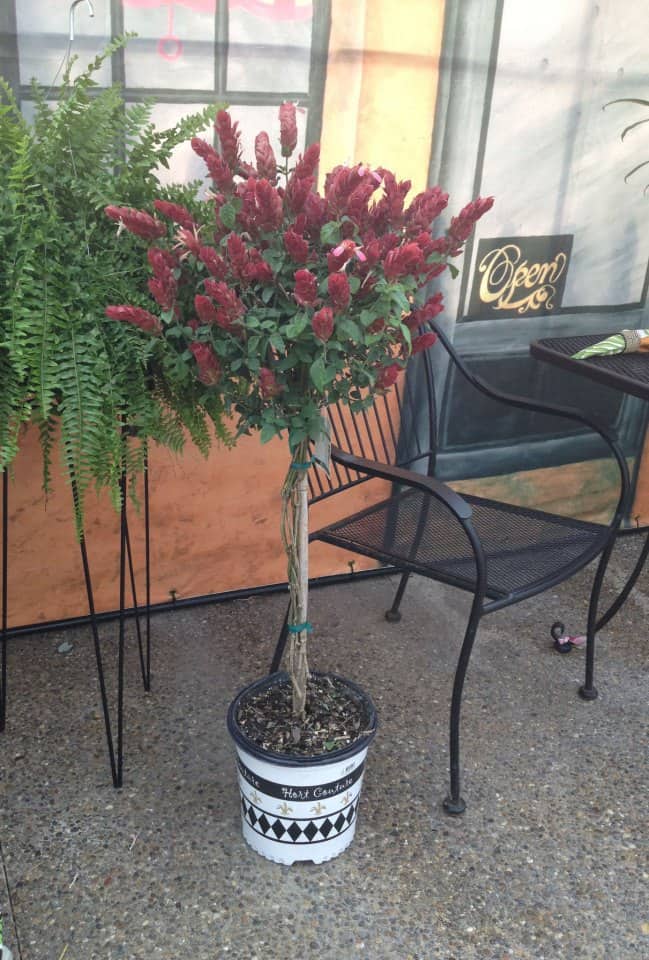Care Requirements For Shrimp Plant

The shrimp plant Justicia brandegeana earned its well-deserved name from its normally arching, bronze-copper flowerheads.
It can display masses of blooms all year and is easy to grow. Shrimp plant belongs to the genus Justicia and is an evergreen shrub of the family Acanthaceae.
I always love to see “common plants” displayed and grown in unusual ways.
The image above is of a shrimp variety from Hort Couture’s St. Lucia Tropical Island Package grown as a tree or topiary form.
Shrimp plants have many varieties, such as red shrimp plants, white shrimp plants, golden shrimp plants, purple shrimp plants, blue shrimp plants, and orange shrimp plants.
Sometimes, they call the golden shrimp plant a yellow shrimp plant or a lollipop plant with the botanical name Pachystachys lutea. Although these varieties belong to the same family, Justica, they can’t grow in the same hardiness zone.
This provides a whole new look and use to this year-round bloom on a deck or patio, and hummingbirds love them.
Here’s a quick rundown on a Shrimp Plants cultural needs of shrimp plants.
Size and Growth Rate
Normally, this plant grows low. A compact size of about 12 inches will encourage flowering. When grown in tree form, keep the head tight for flowering.
Flowering and Fragrance
Grown for its decorative flower heads, which resemble shrimp with green leaves. Flowers are white and tongue-shaped with no fragrance, last a short time, and are replaced with new flowers.
Related Reading: Justicia brandegeana relative the Crossandra plant (Crossandra infundibuliformis)
Light and Temperature
It needs a lot of light, preferably not direct sunlight indoors. Frown outdoors in summer; they can handle sun or shade. Prefer fresh air; not too much summer heat (65–75 degrees); and winter temperatures (55–65 degrees).
Watering and Feeding
The shrimp plant needs well-drained soil outdoors in the summer and water 1-2 times a week. In winter, keep the soil damp; never let the flowering plants dry out completely.
Water with a solution of liquid plant food throughout the warmer months. If the plant flowers during the winter months, cut the amount of feed in half or completely make cuttings.
Soil and Transplanting
It grows best in well-draining potting soil. Repot yearly or give the plant new top soil each spring. To produce more plants, cut three-inch-long cuttings from the tip of the stems.
Plant Problems and pests
- Pale leaves usually need plant food. If hungry, feed plant slowly at first
- Pale, drab flowers lose color, turning dull yellow, which often means plant needs more light
- Flower bract heads blacken; did flower heads get wet during watering or rain?
- Leaves are yellowing, a sign of overwatering. If the soil is dry, look for red spider mites on the undersides of leaves. If found, treat with an approved miticide (see read and follow label) spray and keep humidity up.
- Straggly growth, too much heat, not enough light. Move the plant to a cooler, brighter location.
